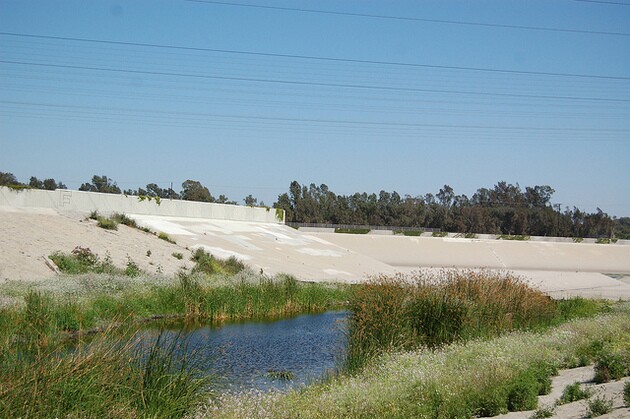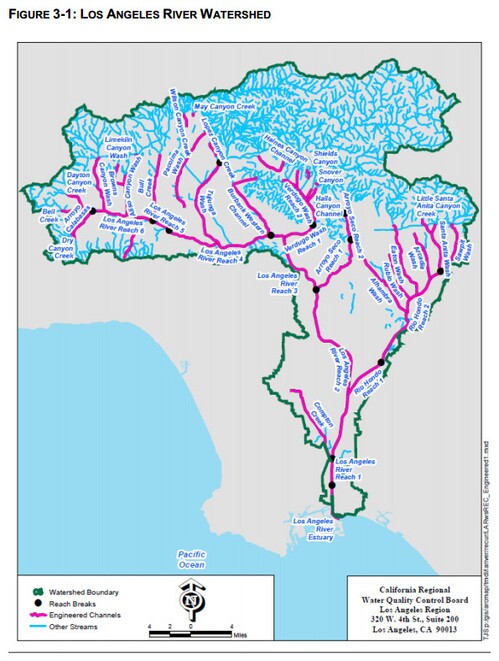New Report Fuels Fears for Decreased Water Protection in the L.A. River Watershed

Unremarked by most, rivers and tributaries within the Los Angeles River watershed are classified depending on its "beneficial use" to the community, whether providing a good ecosystem for wildlife or simply giving people an opportunity for recreation. This designation determines how much protection a water body receives under the Los Angeles Water Quality Control Plan.
In September 2010, the Los Angeles Regional Water Quality Control Board (Regional Board) initiated a move to re-evaluate the recreational uses of the concrete-lined portions of the Los Angeles River and its 31 tributaries, including Arroyo Seco, Verdugo, and Compton Creek. The report has Heal the Bay worried.
If, based on the report, the Regional Board decides to delist or re-designate some portions of the river and its tributaries, those stretches would receive less regulatory oversight and would be vulnerable to relaxed regulations for water pollution.
"Our concern is that [this study] could be the basis of recommendations that are, in our opinion, would take us backward in terms of water quality," said Kirsten James, Science and Policy Director of Heal the Bay.
Called the Recreational Use Assessment of the Engineered Channels of the Los Angeles Watershed (RECUR), the draft report, as the name implies, studies how each portion of the engineered river is being used and whether they have recreational use potential.
The report, released December 2013, makes no recommendations on designation, but simply relates whether or not there have been observed recreational uses based on 12 trips of 131 sites, taken between November 12, 2010 and February 11, 2011; field visits from July 2011 through December 2012; results from KCET's own "How do you use the river" survey; as well as a review of known plans around the waterways. "It's interesting to look at the results, it not necessarily the entire picture," said James. She says that while the report has taken more into consideration, it still doesn't reveal the full picture.
"The board's process for judging the recreational value of the river stretches seems like a bit of Catch 22 logic," writes Heal the Bay on its blog.

The organization says RECUR's methodology is flawed. Some areas are being considered for delisting because no one uses them, but in many cases that result has a lot to do with the fences or no trespassing signs posted in the area, rather than the community's desire to use the facilities.
"The study only captures a snapshot," adds James. "The volunteers and staff [used in the research] can't be out there 24/7, and aren't out there on weekends, holidays and times when people may be recreating." James specifically cites Compton Creek, which the report says hosts no recreational activities, yet Heal the Bay has often seen bathers in the creek.
The summer-specific kayaking program along the Glendale Narrows has proven very popular, but the report doesn't take the great community turnout into account.
The revitalization of Los Angeles's waterways is ongoing, and reduced protections might jeopardize those efforts. At a community meeting to discuss the report, James said many members came forward to share future plans around waterways, which weren't reflected in the report. "If you take this snapshot approach, that flies in the face of these extensive reports on the river," said James.
To ensure that this report doesn't translate to decreased protections, Heal the Bay is asking citizens to read the report, ensure the accuracy of the Board's assessment, and express their concern over how this report would be used in the future. The Board's public comment period ends February 28.
Read the full report here. Send your comments to Ginachi Amah at ginachi.amah@waterboards.ca.gov by 5 pm, February 28. More info here.





